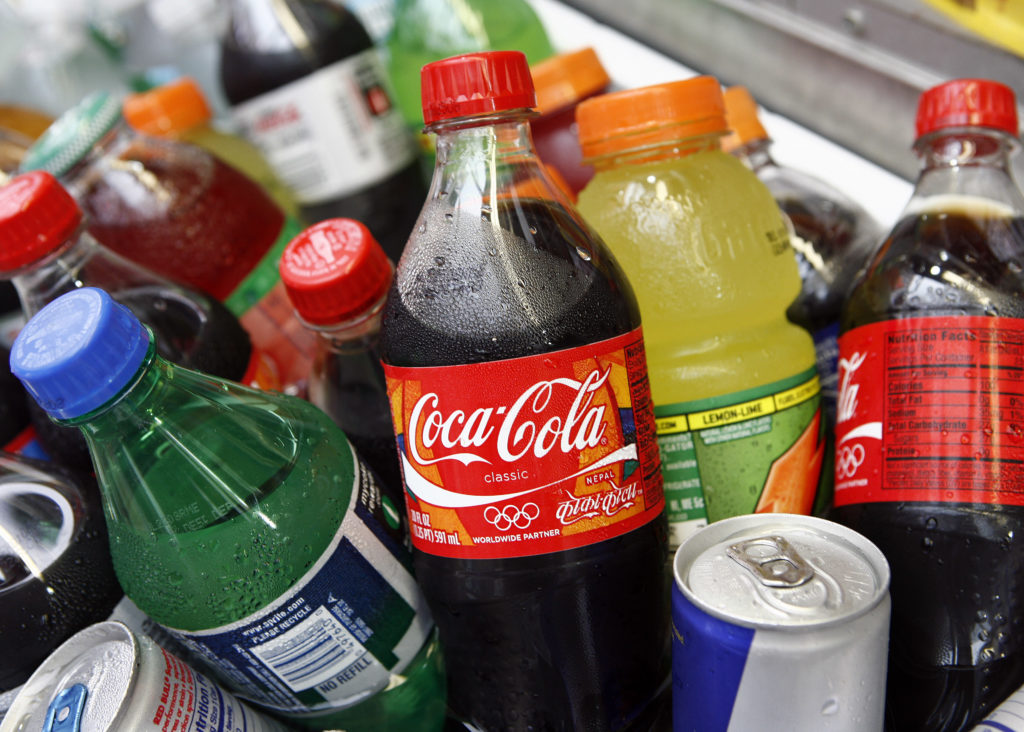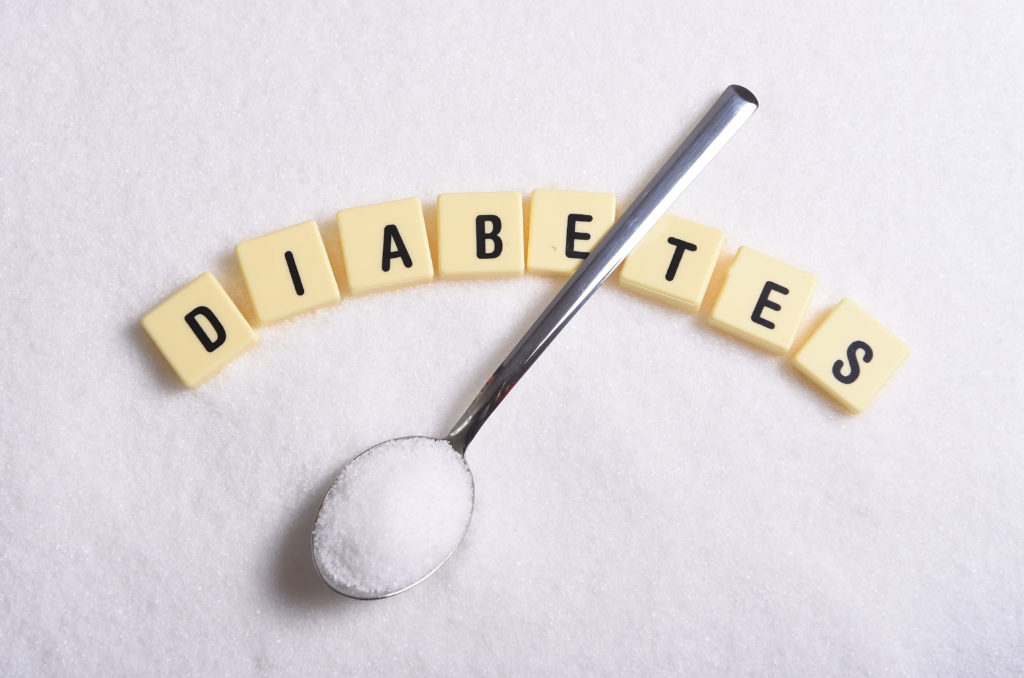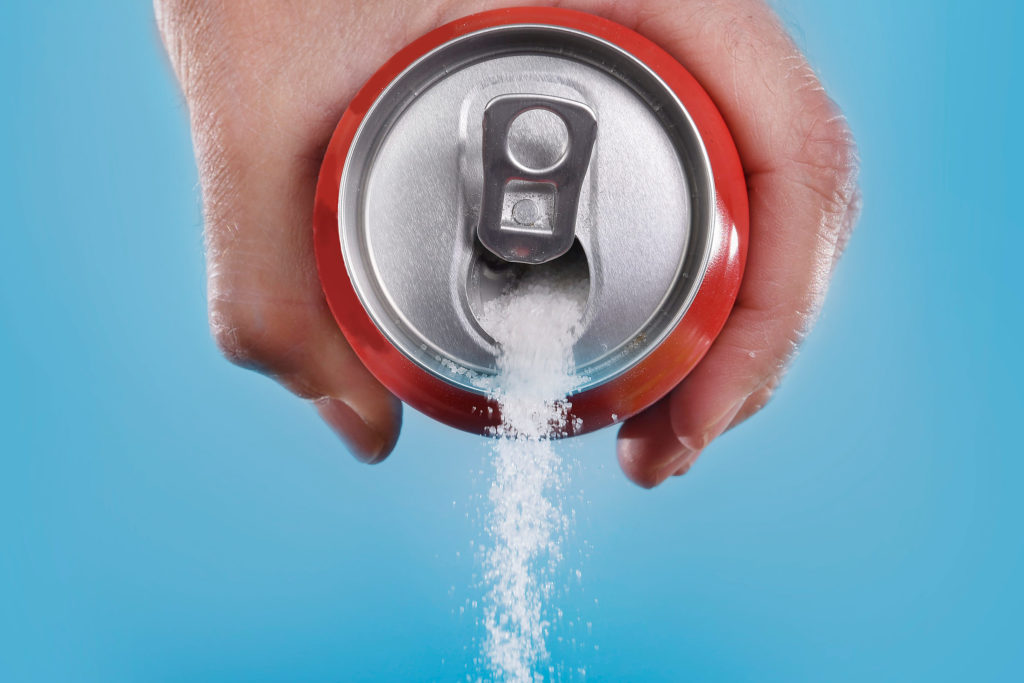Soft Drinks are by far the largest source of sugar consumed by Americans, at 33% in adults, and 40% in children. When fruit drinks are taken into account, the proportions are 43% and 50%, respectively!
Soft Drinks: An everyday drink?
A good cold cola? Men, women, children succumb to this refreshing drink occasionally, often, and even every day. In Canada, annual soft drink consumption reached nearly 120 liters per person in 2002. This represents 60 bottles of large format for every Canadian! The Belgians, the Swiss and the French ingested respectively 103 l, 81 l, and 37 l per year, per person. The Champions? The Americans, who each swallow 216 liters a year. And these figures do not include other sweetened beverages on the market.

Soft Drinks: Obesity-A documented link
Recent studies have examined the impact of consumption of sugary drinks on weight gain in both children and adults.
Soft Drinks: Young people
Published in 2001, research was conducted by US researchers at Harvard University, with 548 children aged 11 to 12 years, for 19 months. The results have linked the increase in soft drink consumption to the incidence of obesity among school children. After weighing the data to account for other factors, the researchers found that each daily drink increased the risk of obesity by 60%. A fairly logical link since already in 1996 statistics showed that American children and adolescents who drank sugary drinks had 200 kcal and 700 kcal more per day, respectively than their peers who abstained.

Soft Drinks: The adults
Research has also established a fairly clear link between sugary drinks and weight gain in adults, including a cohort study that followed more than 50,000 nurses over eight years: those who increased colas’ consumption and other sodas grew by 8 kg, whereas those who reduced it took only 2.8 kg, on average. Two hypotheses may explain why soft drinks and sweetened beverages contribute to weight gain.
On the one hand, their high fructose content would have undesirable effects on the blood levels of certain hormones related to appetite control and satiety. On the other hand, consuming calories in liquid form would have less impact on the appetite than consuming them in solid form. It is striking that when subjects consumed an additional 450 calories per day as candy for four weeks, they adjusted their diet by eating fewer other foods, which they did not do when they added Calories in the form of sodas.

Soft Drinks: Diabetes- a link that is emerging
The cohort study of 50,000 nurses also identified that drinking one or more soft drinks per day increased the risk of developing Type II diabetes by 83% One per month. The situation was even worse in the case of fruit drinks since the risk was multiplied by two. In addition, in September 2005, a case-control study compared the diets of 656 diabetic women and 694 non-diabetic women. The researchers observed that a certain type of diet was associated with a risk of type 2 diabetes three times higher. Women most at risk consumed a lot of sweetened or diet soft drinks, refined cereals, processed meat, but little wine, coffee, cruciferous and yellow vegetables

Soft Drinks: Osteoporosis: a growing concern
The consumption of soft or sugary drinks competes with that of milk in children and adolescents. The figures are staggering: for example, from 1965 to 1996, in the United States, soft drink consumption surged by 187% among adolescents and 123% among teenagers. During the same period, young people abandoned milk: a drop of 43% in girls and 37% in boys.
In Canada, milk consumption increased from 97.79 liters per person in 1976 to 85.52 liters in 2004, while that of soft drinks increased from 63.14 liters to 109.89 liters during the same period. The result is lower consumption of calcium at the same time as it is vital to the growth of the bone mass, especially in girls, according to Claudine Blanchet, Ph.D., the osteoporosis specialist.
“Bone mass reaches its peak at age 27 in women. The consumption of soft drinks at the expense of milk hinders the optimum accumulation of this capital which is at its peak during adolescence. And this, especially since several of these drinks contain caffeine, a substance that decreases the absorption of calcium.

Soft Drinks: The dangerous combination of sodas and quick meals
One reason that sweetened soft drinks lead to obesity is the habit that one has to consume them with very fatty foods. The sugar of the drink induces the pancreas to produce insulin, and insulin signals the body to make reserves of fat. In the meantime, the hamburger and the chips since there is more insulin than it takes for the meal, the body stores the fat instead of burning it.

Soft Drinks: The adverse health effects
The craze for sodas or soft drinks goes back to the eighteenth century and the advent of naturally effervescent mineral waters. Originally used to soften the aftermath of over-watering parties, they are never finally out of fashion. The average North American consumes 182 liters a year, and the Europeans approach it dangerously. It also damages teeth because the sugar of the sodas maintains the bacteria, agents of caries. Many sodas also contain acids (phosphoric acid, citric acid, etc.), which attack the enamel of the teeth.
In adults, too much caffeine can promote hypertension and arrhythmia. People who are subject to it have every interest in choosing a “caffeine-free” cola. Soft drinks with fruit juice flavor are not better for health. If one reads the label, one will see that they contain at best 10% of fruit juices, but especially sugars and dyes.

